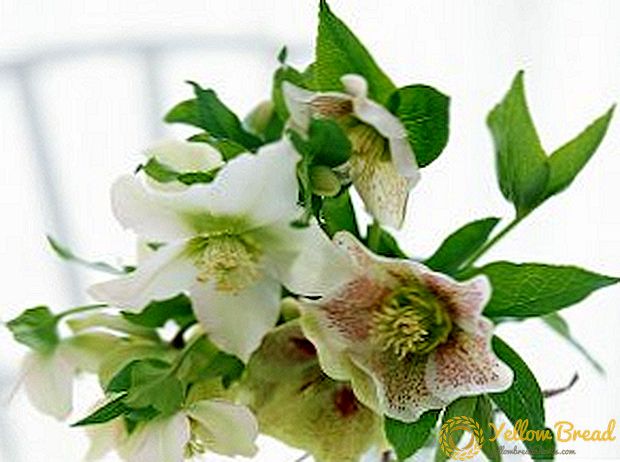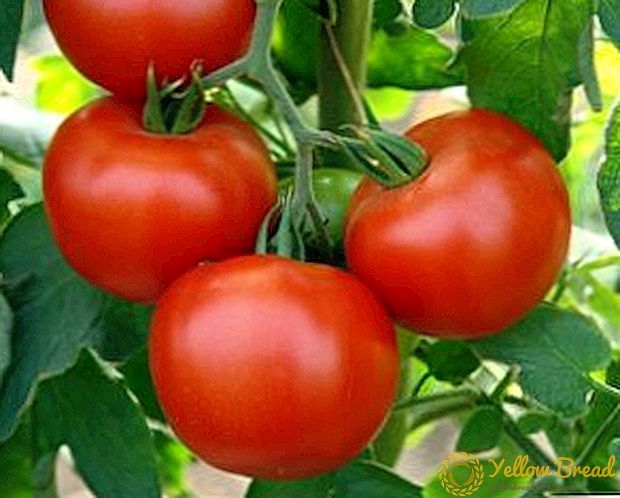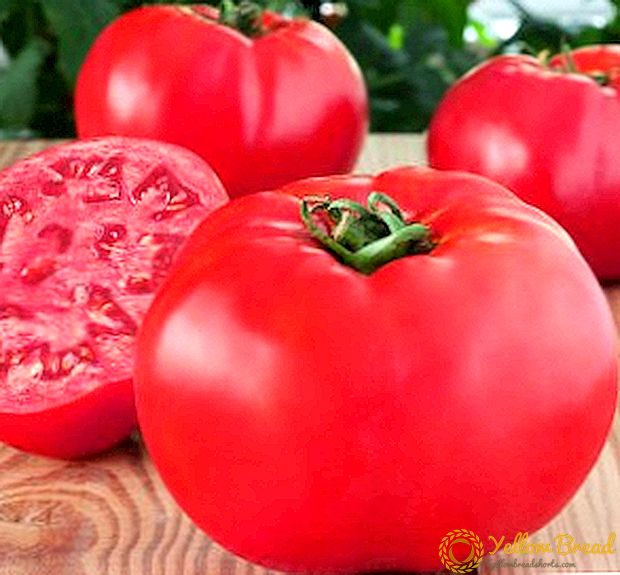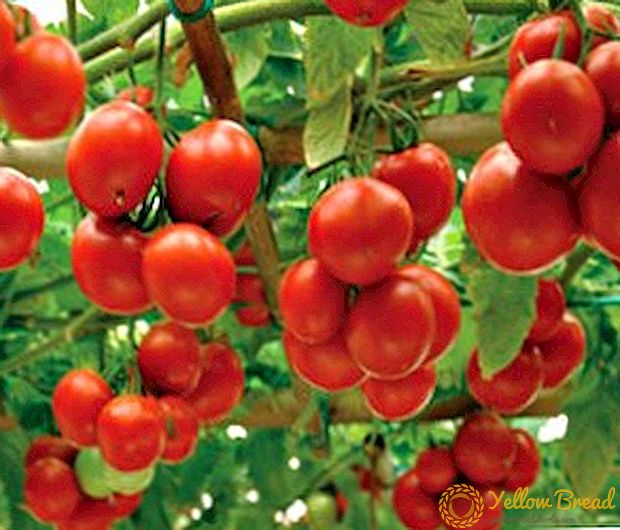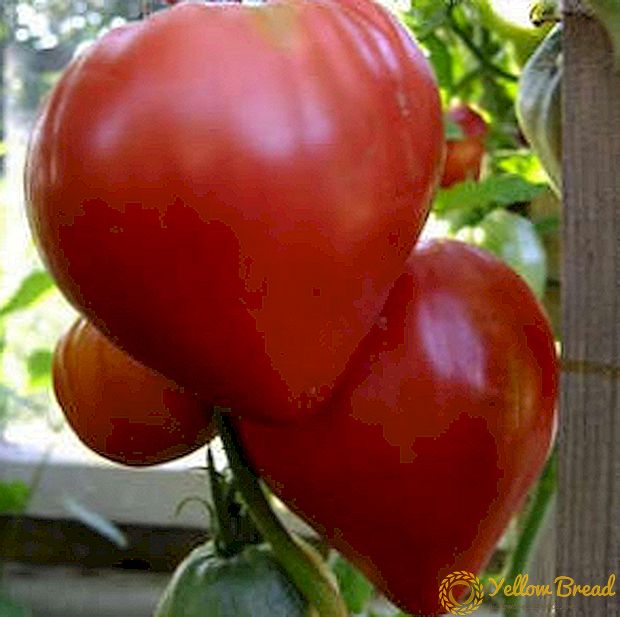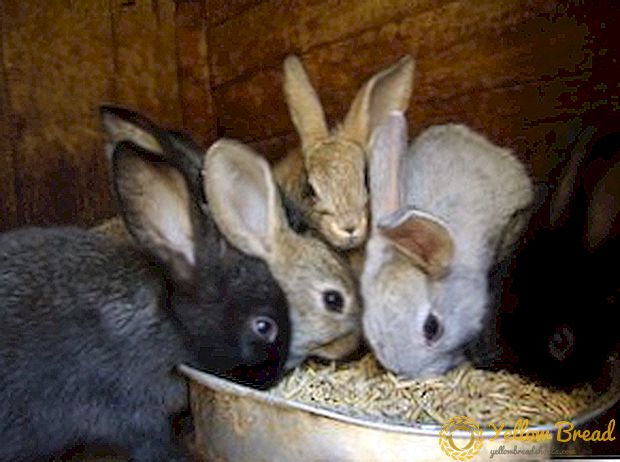
Lovers of large-fruited tomatoes will surely like the variety "Bear Paw".
Tomatoes are juicy and tasty, ideal for salads, juices and other dishes.
Tomato "Bear Paw": description and characteristics of the variety
A variety of amateur breeding, intended for cultivation in regions with warm and temperate climates. Suitable for planting in open ground and film greenhouses. In areas with a cold climate, it is better to grow in greenhouses.
Harvested fruits are well stored and transported. Plucked green, fruits ripen quickly at room temperature.
 Bear Paw is a mid-early high-yielding variety. Indeterminate shrub, reaches a height of 2 m.The leaf is simple, dark green, the formation of green mass is abundant.
Bear Paw is a mid-early high-yielding variety. Indeterminate shrub, reaches a height of 2 m.The leaf is simple, dark green, the formation of green mass is abundant.
Tomatoes ripen in small brushes of 3-4 pieces. The variety is very productive, up to 30 kg of fruit can be harvested from one bush. Ripening is gradual, throughout the season.
Advantages and disadvantages
Among the main advantages of the variety:
- large fruits with bright pleasant taste;
- good immunity, which allows to endure heat and drought without problems;
- excellent yield;
- resistance to major diseases.
Among the shortcomings of the variety:
- tall bushes require formation and strong support;
- pronounced sour taste does not like all consumers.
Characteristic of fruits:
- Fruits are large, flat-rounded, with grown ribbing at the stem.
- The weight of tomatoes reaches 800 g
- During ripening, the color changes from apple green to deep dark red.
- The peel of the fruit is glossy, not hard.
- The flesh is juicy, fleshy, the taste is bright, sweetish with pronounced sourness.
- The fruits have a large number of seed chambers.
Large fleshy tomatoes can be consumed fresh, used to prepare salads, soups, hot dishes, sauces, homemade tomato pastes and mashed potatoes.Ripe tomatoes make a delicious rich red juice.
A photo
You can get acquainted with the fruits of the tomato variety “Bear paw” in the photo:




Features of growing
Tomatoes Bear Paw tolerate drought, but respond very well to proper watering and timely feeding. To count on a good harvest is possible only with constant care for plantings.
Seeds are sown on seedlings in March or early April. Requires nutrient soil from a mixture of turf or garden soil with humus. To ease the soil will help add a small portion of vermicult or washed river sand.
After germination, the container with the seedlings is moved to the window sill of the south or southeast window. In cloudy weather, young plants will need additional lighting, fluorescent lamps will have to be strengthened over the plantings. Seedlings like moderate watering with warm settled water. Between irrigation, topsoil should be slightly dry. At least once a week, they gently loosen it, trying not to damage the sprouts.
After the formation of 2-3 of these leaves is carried out picking seedlings in separate pots. Then, the first feeding with nitrogen fertilizers, stimulating the formation of green mass. Another feeding is done before transplanting seedlings to a permanent place of residence.
The optimal time for a transplant is the second half of May.when the soil is completely warm.The earth is carefully loosened, complex mineral fertilizers are laid out in the holes (not more than 1 tbsp of spoons per plant). The optimal landing pattern is 3 bushes per 1 square meter. m. thickening landings leads to disease and lower yields.
Immediately after transplantation, high seedlings are tied to supports. Tomatoes of this variety are conveniently grown on a trellis, horizontal or vertical.
Shrub form in 1 or 2 stems, removing side shoots and lower leaves. In case of excessive growth, you can pinch the growth point. As the fruits ripen, the branches also fasten to the supports, otherwise they may break.
Tomatoes require infrequent, but abundant watering. Only warm water is used, cold water can cause a massive discharge of ovaries. In between watering the soil loosened, weeds are removed. During the season, the plants need to be fed 3-4 times, alternating between mineral complexes and organic matter. Nitrogen-containing complexes are used before flowering; after the formation of ovaries, emphasis should be placed on potassium and phosphorus. Lack of nutrients adversely affects yield.
Pests and diseases
 Sort "Bear Paw" resistant to the main diseases of the nightshade: verticillosis, late blight, fusarium wilt, tobacco mosaic.However, preventive measures to prevent possible ailments are necessary. Before planting, the soil is spilled with a hot solution of potassium permanganate. After watering, the windows of the greenhouse or greenhouse should be opened so as not to provoke the appearance of gray or white rot. It is recommended to soil the soil with straw or peat, This procedure will prevent root rot.
Sort "Bear Paw" resistant to the main diseases of the nightshade: verticillosis, late blight, fusarium wilt, tobacco mosaic.However, preventive measures to prevent possible ailments are necessary. Before planting, the soil is spilled with a hot solution of potassium permanganate. After watering, the windows of the greenhouse or greenhouse should be opened so as not to provoke the appearance of gray or white rot. It is recommended to soil the soil with straw or peat, This procedure will prevent root rot.
It is very important to protect planting from insect pests. Tomatoes are threatened by naked slugs, Colorado beetles, aphid, whitefly, thrips, medvedka, spider mites.
Spraying with liquid ammonia solution helps to destroy the slugs and larvae of the Colorado beetles. You can get rid of aphids by washing the affected plants with soapy water. An effective way to combat volatile insects is aerosols with insecticides. Treatment with toxic drugs can be carried out before the start of fruiting. After fruit set, preference is given to popular recipes: broths of celandine, chamomile, onion peel. Not only the affected bushes are sprayed, but also nearby tomatoes.
Tasty, large and juicy tomatoes "Bear Paw" - an excellent grade for the gardeners who are not afraid of experiments.Plants take root well in the greenhouse or in the ground, but the yield is strongly influenced by temperature, watering and the quality of fertilizing. Finding a scheme that suits your tomatoes, you can collect an impressive harvest.

